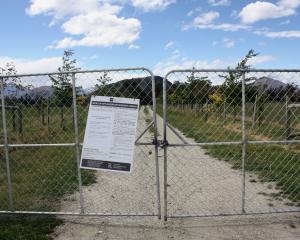In a report to the council's strategy committee, which meets today, Daniel Wells said he had concerns about some provisions in the QLDC's Rural Visitor Zone, and suggested changes.
"There is a strong case to be made that, as part of any future review of this part of the District Plan, considerable attention be given to changing this zone.
"This is because there is probably more risk of inappropriate development in this zone than most other parts of the district," Mr Wells said in the report.
The areas given the rural visitor zone status included Cardrona Village and Mount Cardrona Station between Wanaka and Queenstown; Windermere near Wanaka Airport; Arthurs Point near Queenstown; Blanket Bay, Cecil Peak and Walter Peak along Lake Wakatipu; and Arcadia Station north of Glenorchy.
These areas had been identified as locations for potential development.
The zoning allowed for generous height limits (up to 12m for visitor accommodation) and no restriction on site coverage, Mr Wells said in the report.
This created an opportunity for a high density of development at these rural locations.
Using the often relatively dense development at Cardrona Village and Arthurs Point as examples, it was suggested a similar level of development at the other very large sites could result in a "quite fanciful" amount.
"There is thought to be potential for more residential dwellings in the Rural Visitor Zone than exist in the entire district.
While in reality it is unlikely that developers would often maximize these unattractive built forms, these rules suggest a baseline of what is appropriate.
This makes it difficult for the council to argue that the effects of proposals are unacceptable," Mr Wells said.
The report recommended considering the individual characteristics of each of the areas marked as rural visitor zone status, to reflect the diverse range of issues faced.
"The sizes of the zones mean they may well be able to be downsized so that they still allow a reasonable amount of development to occur, but in more appropriate locations and with better design controls."











